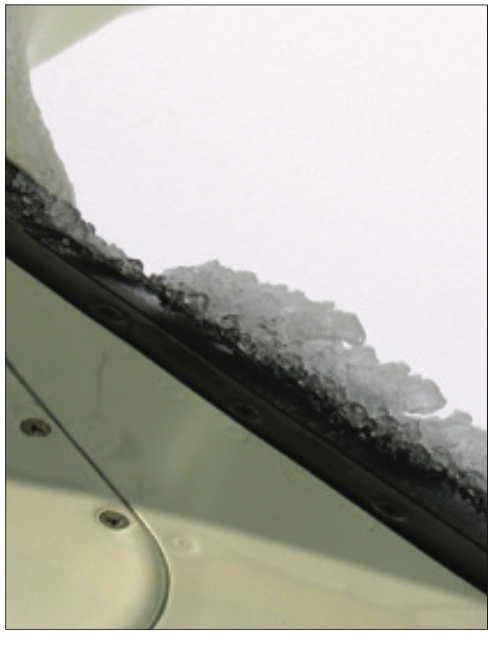Thank you for Aviation Safety magazine. It’s exceptional. But I do have an issue with April’s Accident Probe entry, “Exceeding Capabilities.”
As you know, aircraft certified for flight into known icing conditions, both single pilot and crew-piloted, have succumbed to in-flight icing. More recently, as you also know, an aeromedical operation flying single- and crew-piloted King Air were lost to what appears to be icing-related accidents. By all accounts, those were professional pilots in good standing.
The area that I have issue with relates to the review of the airman’s certification file and the insinuation that a history of disapprovals has bearing on the accident.
In air transport hiring, the old standby is to ask about any failed checkride to weed out the liars. An ATP will have taken private, instrument, multi-engine, commercial and ATP checkrides by the time they interview for a first officer position. The odds of never making a misstep, having a bad day or a grumpy examiner, etc., are quite low over the course of those checkrides.
Completing all the elements for the private pilot yet omitting checklists and getting a notice of disapproval doesn’t make a bad pilot. Completing all the elements for the commercial pilot except landing 50 feet long or short during the power-off 180 doesn’t make a bad pilot. I know an ATP who got a notice of disapproval for poor basic pilotage.
In all these examples, the candidate got back with the instructor and went on to complete the rating.
Furthermore, this pilot kept seeking out new ratings! He didn’t just get a private and instrument, but kept seeking out higher levels of ratings. The fact that he didn’t ace all of his checkrides and had disapprovals is more of a negative reflection on his instructors! You can’t take checkrides without being signed off as ready for the checkride by a CFI.
I think bringing this up in the article could be discouraging to other pilots. The reader might have a history of disapprovals on checkrides and wonder, “Am I a bad pilot because it took me a couple of times to pass all of my checkrides?”
If anything, this pilot was determined and persistent in the face of disapprovals. He didn’t quit and kept going back. That’s not necessarily the sign of a bad pilot. In fact, it’s kind of the opposite; i.e., the pilot that gets a pencil-whipped BFR as his only continued training.
Finally, Part 141 flight school pilots often are getting their ratings as full-time students, i.e., without the “day job” distractions a Part 61 candidate often has. They get instruction when they can and chip away at ratings. Like this pilot, Part 61 pilots are at a distinct disadvantage when they meet with their DPE versus their Part 141 professional students.
Lastly, all of the following elements commonly seen in IMC-LOC accidents don’t apply: a non-instrument pilot continuing into IMC, a non-certified aircraft flying into known-icing conditions, a pilot who didn’t obtain recommended pre-flight weather briefing(s), a pilot whom on post-mortem had medicines or substances in their system disallowed by the FAA.
So, I found this article, even if in this case what was insinuated was true about the pilot, unfair. In this type of accident, a pilot and often passengers have died. The NTSB sticks to the specific factors in the accident that can be ascertained. I think when we evaluate as non-officials, we should do the same.
Jason B. Sigmon – Via email
Thanks, Jason. We didn’t dig through the accident pilot’s certification files; the NTSB did, and thought enough of his record to devote to it a page of their 10-page final report. Also, the NTSB didn’t comment on whether the accident pilot trained under Part 61 or Part 141, but did note the airplane was nine percent over-gross at takeoff, and made clear that an even-money chance of moderate-to-heavy icing existed along the flight path. Θ
Send your thoughts, comments or questions to [email protected]




